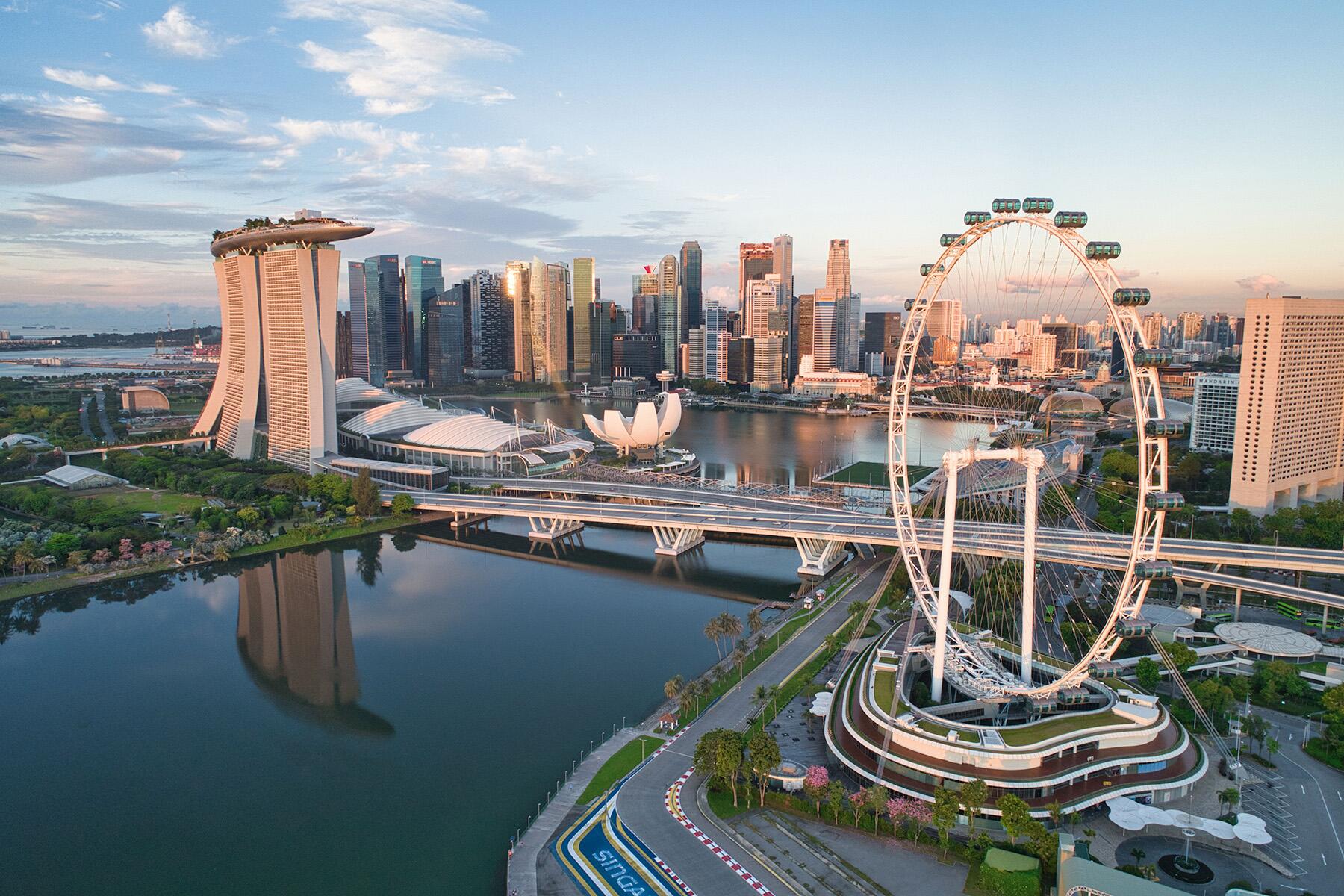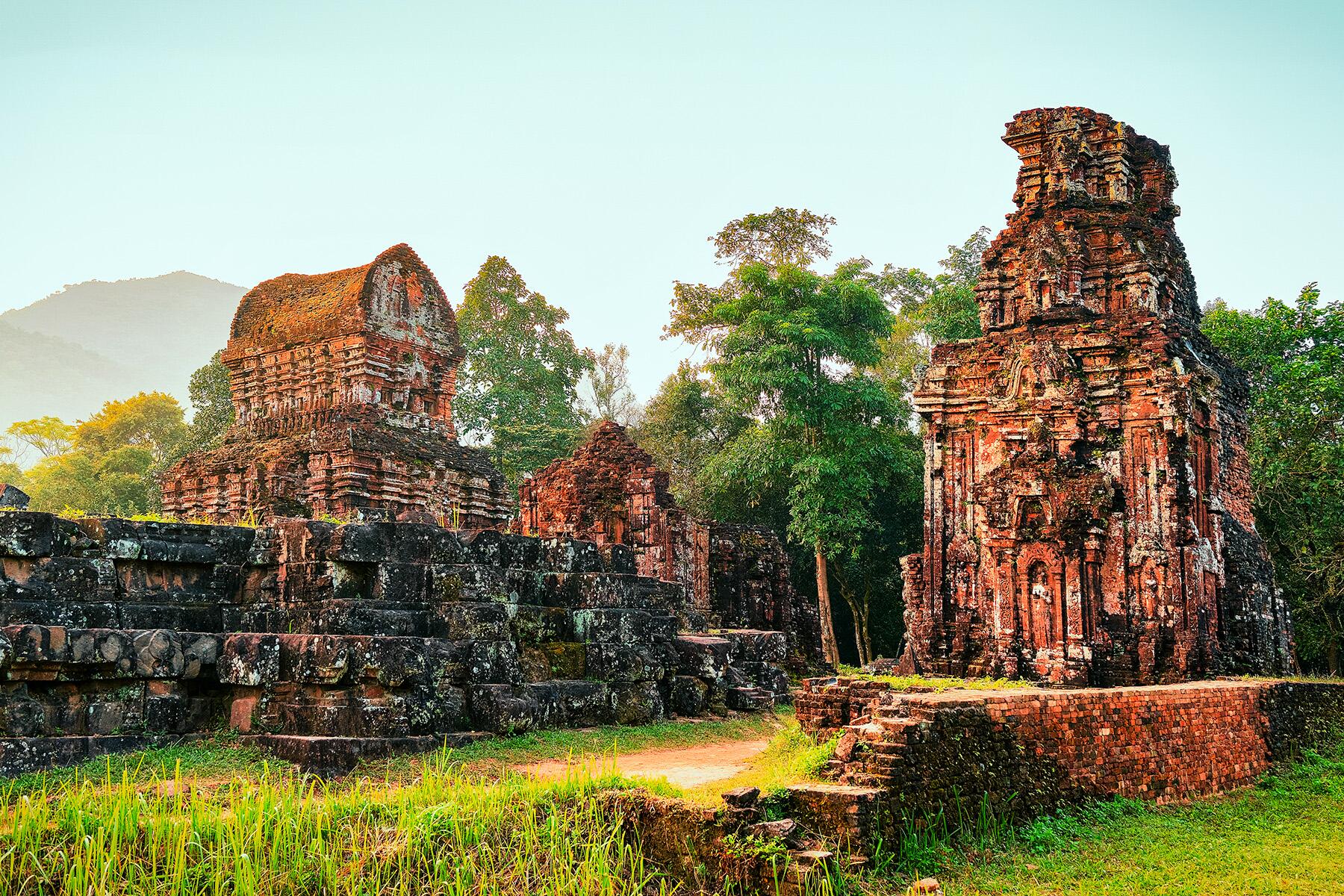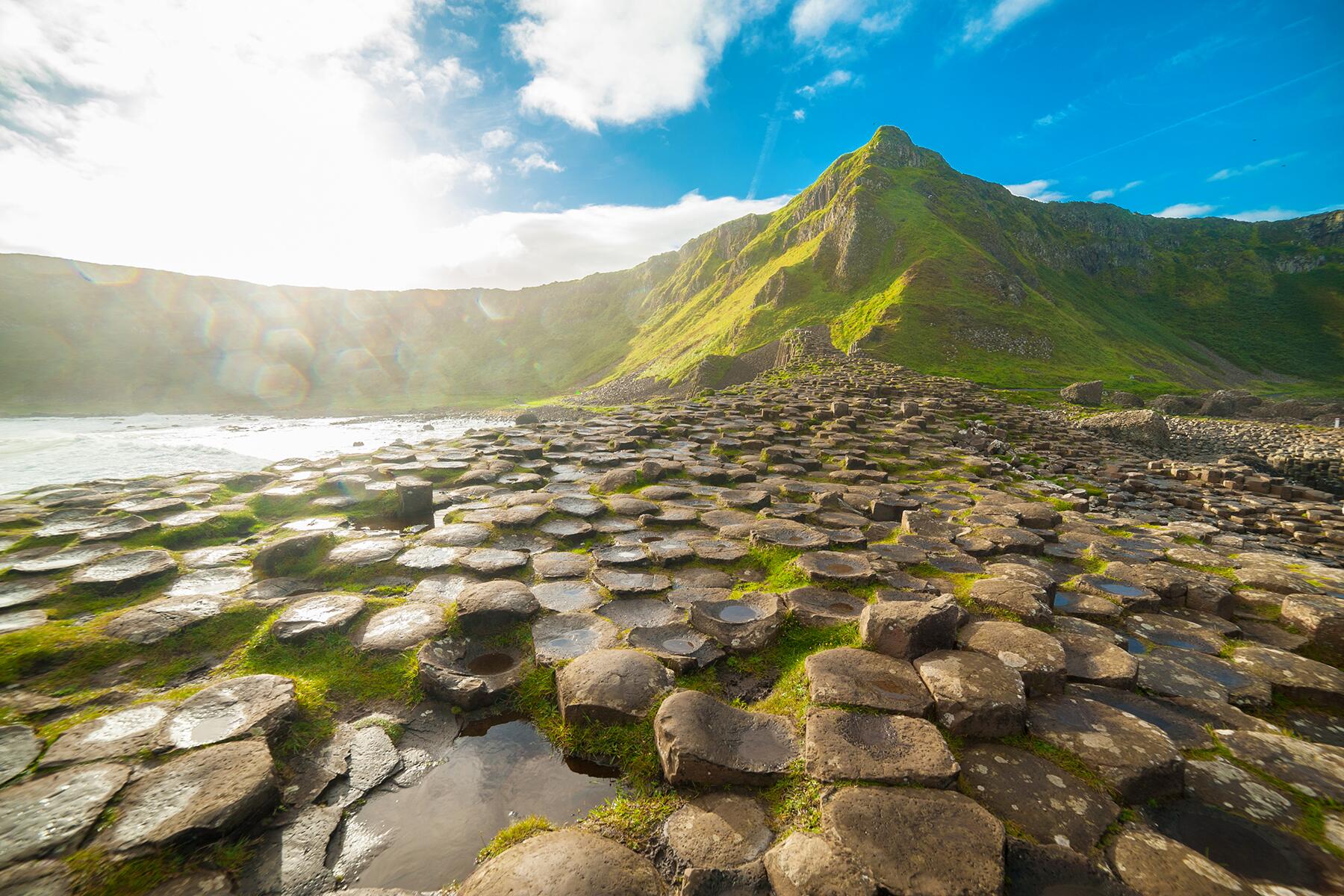China’s breadth is incredible, stretching from the East China Sea all the way west to Central Asia.
In Shanghai, urbanites bite into delicate xiaolongbao (soup dumplings) while 3,000 miles away in Kashgar, closer to Baghdad than Beijing, Uyghurs sit for lamb kebabs and naan.The Middle Kingdom is a country of superlatives—the most people, the largest palace complex, the highest skyscrapers—but look closer and you’ll see it’s also one where hill tribes work rice fields, prized tea is still picked by hand, and you can find yourself alone on the Great Wall. To try and see everything would be overwhelming, but tackle this list of 25 fantastic China experiences and you’ll have stories to tell for years to come.
Top Picks for You
Float Down the Li River
WHERE: Guilin/Yangshuo
The back of the ¥20 bill is printed with a pastoral scene—the curve of the Li River hugged on both sides by karst peaks, a loan boater paddling her way down the river. Go to the city of Guilin or the nearby town of Yangshuo and that boater could be you. There are several ways to float down the Li River. There are comfortable river cruise boats that run from Guilin to Yangshuo and back; this trip takes four to five hours. There are also small, motorized rafts on which you’ll sit in bamboo armchairs under an awning. These run in Yangshuo and nearby villages. Finally, within Yangshuo, good quality kayaks can be hired; you’ll be on your own, floating down the Li in almost complete silence.
INSIDER TIPKayaks give you the most autonomy, but be prepared to get wet. The Li River is clean enough for swimming and, considering the heat, a dip will be a treat.
Eat an Egg Tart
WHERE: Macau
Macau, a Portuguese colony from 1557–1999, has the distinction of being the first and last European colony in China and the last European colony in Asia. A long period of being Portuguese had many lasting effects on Macau, but none are as delicious as its egg tarts. The shells are light and flaky, the golden yellow interior sweet, the caramelized spots on top a crème brûlée consistency. You’ll find egg tarts all over Macau, but the best are on Coloane, at the original Lord Stowe’s bakery. True, Lord Stowe’s was opened by English baker Andrew Stowe, but one bite of these tarts and you’ll think Stowe was practically raised in a Portuguese kitchen.
INSIDER TIPAfter munching on your tarts, take a stroll around Coloane Village. Its quiet back streets are a reprieve from the chaos of the Cotai Strip. Contrast a visit to egg-yolk-yellow baroque Chapel of St. Francis Xavier with a stop by Toaist Tam Kung Temple.
Recommended Fodor’s Video
See the Forbidden City From Above
WHERE: Beijing
The sheer scale of the Forbidden City is impossible to take in when you’re walking through it. It covers 2.6 million square feet (for comparison’s sake, Buckingham Palace covers 828,818 square feet) and has more than 800 buildings. After you see the Forbidden City up close, go to Jingshan Park, which was built around the small hill formed from the ground excavated for the Forbidden City’s moats. A winding staircase leads you to the top of Jingshan Hill, where you can snap photos in front of Wanchun Pavilion before turning your attention to the view. On a clear day, it’s the best view of the Forbidden City you’ll ever have, and you can see the Bell and Drum towers, too.
INSIDER TIPFor a similar view of Tiananmen Square without the climb, head to square-side restaurant Capital M and snag a seat on the terrace.
See Giant Pandas
WHERE: Chengdu
Pandas are super cute, and there’s nowhere else in the world other than the Giant Panda Breeding Research Base where you’ll see so many in one place. Walk through the peaceful bamboo groves and see adult and adolescent pandas playing, climbing trees, and munching bamboo. The tiny baby pandas are simply adorable and certainly draw the largest crowd of cooing onlookers. The park itself is verdant and lovely to stroll. The food for sale here is expensive and mediocre; bring lunch and you’ll be much happier.
INSIDER TIPGet here at opening hour. You’ll avoid the crowds that pour in around 10 am and the pandas, having just eaten breakfast, will be at their most active.
Go Hiking in Zhangjiajie National Forest Park
WHERE: Hunan province
While the name may not be familiar to you, if you’ve seen Avatar, the mountains certainly will be. The movie’s floating mountains were inspired by the pillar-like quartz-sandstone formations at Zhangjiajie National Forest Park. These mountains are a hallmark of classical Chinese painting, and one visit to the park and you’ll see why: it’s stunning. The ever-present fog and mist gives the peaks, wreathed in greenery from all the rain, an ethereal quality. Accommodations have been made for visitors with all levels of fitness and mobility, including Bailong Elevator, a 1,070-foot-high glass elevator built into the side of a cliff.
INSIDER TIPAvoid coming here during the first week of October, China’s Golden Week, when the park is mobbed. December through February, although fairly cold (averaging around 40ºF) sees the park fairly empty and breathtaking as ever.
Go to the Top of Victoria Peak
WHERE: Hong Kong
Commonly referred to as The Peak, Victoria Peak is a mountain on Hong Kong island that reaches 1,811 feet. Until 1888, with the opening of the Peak Tram, the only way wealthy Europeans could reach their Peak homes was by sedan chair. The Peak Tram is the world’s steepest funicular railway, and riding it to the top is great fun. Upon arrival, you’ll see the Peak Galleria Mall; walk through its air-conditioned confines to the free viewing platforms and take in the astounding views of Hong Kong. On a clear day you can see the glittering skyline, Victoria Harbour, and even the mountains of Kowloon. No matter how many times you come up here, the knockout view never gets old.
INSIDER TIPTo get down from the Peak, you can take a taxi or the bus, but consider one of the fairly low-impact trails, from which you’ll be treated to even more sweeping views.
Eat Hot Pot
WHERE: Chengdu
Chengdu is the capital of Sichuan province, whose local cuisine owes its fiery flavor to the peppercorn of the same name. Hot pot works as follows: a pot of boiling broth is delivered to your table, along with plates of raw ingredients—red and white meat, seafood, vegetables, and tofu—which you cook yourself. While the broth is bubbling, mix your own dipping sauce from a cornucopia of choices, including soy sauce, sesame sauce, and vinegar, as well as burning-hot chili oil. A standard Sichuan broth is on the oily side and packed with Sichuan peppers, chilies, and chili oil, but there are mild options, too. Clear broth and mushroom broth have no Sichuan peppers and a mild taste.
INSIDER TIPIf you want to try the spicy broth without committing to a full pot, order yuanyang guo (鸳鸯锅), a hot pot with separate sections for the spicy and clear broths.
Visit the Temple of Heaven
WHERE: Beijing
The Temple of Heaven is not one structure but a 15th-century complex built inside a beautiful park. It was here that Ming and Qing dynasty emperors once performedimperial sacrifices to ensure a bountiful harvest. The anchor building is the wooden Hall of Prayer for Good Harvests, 118 feet in diameter, 125 feet tall, and built without a single nail. Temple of Heaven park is a treat; come in the morning to see locals practicing tai chi and qi gong, playing xiangqi (similar to chess), and expertly flying kites.
INSIDER TIPBeijing is very spread out, so it makes sense to visit multiple sites off the same metro line on the same day. Line 5 (the maroon line) runs to both the Temple of Heaven (Tiantandongmen stop, meaning Temple of Heaven East Gate) and to Lama Temple (Yonghegong Lama Temple stop).
Visit Kashgar’s Sunday Market
WHERE: Kashgar
Kashgar’s Sunday Market is actually two markets 6 miles apart. The Yengi Bazaar is a mile northeast of the city center and open every day, but is busiest on Sunday, when the surrounding streets teem with vendors. Sheep’s head might not make a great souvenir, but what’s in the covered section will—think colorful embroidered fabrics, hats, and a cornucopia of knives. Ulak Bazaar is an enormous livestock market, and on the off chance you fancy bringing a camel home, you won’t find a better deal anywhere else. Keen photographers won’t be able to snap photos fast enough to keep up with the activity here. Work your way to the outer edges of the market, where you can tuck into a bowl of lamian (hand-pulled noodles) with meat so fresh you probably saw it walk by.
INSIDER TIPFeeling a bit hairy after being on the road for so long? Sit down for a straight razor shave that’ll leave your face smooth as silk.
Ogle the Longsheng Longji Rice Terraces
WHERE: Outside Guilin
Just 90 minutes’ drive from Guilin is one of China’s most remarkable sites: the Longsheng Longji Rice Terraces. Longjimeans “Dragon’s Back” so named because the peaks of the mountain range resemble the backbone of a dragon. These rice terraces are cut into the hills, worked for generations by Yao, Dong, Zhuang, and Miao farmers and look like undulating ribbons. They’re mesmerizing in shape, color, and scale.
INSIDER TIPBe sure to try zhutongfan (bamboo tube rice), in which glutinous rice, dry meat, peanuts, and bamboo shoots are sealed in a bamboo tube with sweet potatoes and then cooked over an open fire. The resulting rice has a tasty consistency.
See the Mogao Grottoes
WHERE: Dunhuang
Dunhuang may be a small town on the Silk Road, but it was here that Buddhism was brought to China. Seventeen miles east of town are the Mogao Grottoes, 700 caves filled with ancient Buddhist art. At least 40 caves are open to the public, although which caves are open depends on the day. Caves 96 and 130, home to the giant seated Buddhas, are nearly always open, as is cave 148, where you’ll see the Tang Dynasty sleeping Buddha. Among the most popular are the library caves (16 and 17), once home to 45,000 manuscripts dating from the 5th to early 11th centuries.
INSIDER TIPTours in English run two to three times per day in high season, and although you can view everything yourself, a thorough historical overview provides good context.
Hike Tiger Leaping Gorge
WHERE: Outside Lijiang
The world’s deepest gorge offers intrepid travelers two treks. The upper trail runs 25 miles; avid trekkers can finish it in a day, but everyone else will want to go at a more leisurely pace to enjoy the scenery. There are guesthouses scattered along the trail. If you prefer a shorter hike, you can leave the upper trail at a few locations and catch buses back to Lijiang. You can also skip the trek entirely and go right to the river’s narrowest point—the gorge takes its name from a tiger who, legend has it, leaped across to evade a hunter. From the Lijiang side of the gorge, there’s a languid 3-mile walk. From the Shangri-La side, you can drive almost all the way there, save for the last few hundred steps down.
INSIDER TIPTake out cash in Lijiang before you head off to Tiger Leaping Gorge; you’ll need a few hundred yuan to pay for your guesthouse, entrance and bus tickets, food, and water. Be sure to bring plenty of water.
See the Neon Lights of Nathan Road
WHERE: Hong Kong
Going to Kowloon at night kills two birds with one stone: You can see the Hong Kong island skyline lit up, its lights reflected in Victoria Harbour, and the neon lights of Nathan Road are ablaze. Nathan Road runs from Tsim Sha Tsui all the way north to Sham Shui Po. It’s lined in shops and restaurants with neon signs overhead advertising noodles and seafood, jewelry and cosmetics. Wong Kar-Wai fans will want to stop by ramshackle Chungking Mansions, the setting for Chungking Express. Its five tower blocks are packed with cheap hotels, DVD and electronics shops, and South Asian restaurants. Off Nathan Road are narrow streets filled with even more stores and places to eat.
INSIDER TIPSkip the MTR and take the Star Ferry to Tsim Sha Tsui from either Central or Wanchai. Ferry tokens are just HK$2.50 on weekdays and HK$3.40 at weekends, a very small price to pay for a tranquil ride across Victoria Harbour.
Climb the Great Wall of China
WHERE: Beijing
If you only visit one historic site in the Middle Kingdom, make it this. The Great Wall runs more than 13,000 miles—the distance by plane from New York to Beijing and back. In Chinese, it’s called changcheng, literally “long wall.” Over thousands of years these walls have been destroyed, rebuilt, maintained, and extended; much of the wall you see today dates to the Ming Dynasty (1368–1644). A handful of sections of the Great Wall are accessible from Beijing. Badaling, though heavily commercialized, is quite accessible. Emptier but also heavily restored is nearby Juyongguan. The far-flung sections Simitai and Jinshanling are wild, rambling, and beautiful, and you need a reasonable level of fitness to hike either of these. Mutianyu is good middle ground—it’s less crowded, restored but not sterile, and although the climb to the wall is strenuous, there is a cable car.
INSIDER TIPFor visits to Simitai and Jinshanling, it’s essential to pack food. From Mutianyu, head to one of the excellent restaurants run by The Schoolhouse at Mutianyu, which utilize local, organic ingredients.
Eat Xiaolongbao (Soup Dumplings)
WHERE: Shanghai
Ask a group of locals in Shanghai where to eat xiaolongbao and you’re likely to start an argument, so strong are opinions on these steamed dumplings. The thin-skinned, soup-filled dumplings, traditionally made with pork, are cooked in small bamboo steamers and served with shredded ginger and Zhenjiang vinegar, a black rice vinegar made in Zhenjiang, in neighboring Jiangsu province. You can’t go wrong at Jia Jia Tang Bao, just north of People’s Square. Fine dining this is not; queue up, place your order (there’s an English menu available), and sit on an orange plastic stool to await delivery of a steamer full of ambrosial xiaolongbao.
INSIDER TIPTo avoid burning your tongue on the scalding soup within, use chopsticks and a soup spoon to bring the xiaolongbao to your mouth. Take a small bite—or use your chopsticks to poke a hole—to allow some of the heat to escape before you devour the rest.
Visit Potala Palace
WHERE: Tibet
Long before modern skyscrapers started shooting up, Lhasa’s Potala Palace was the world’s tallest building. The former seat of Tibetan government and the winter residence of the Dalai Lamas, Potala Palace stands on Mount Marpori, towering 384 feet above visitors. The palace has more than 1,000 rooms; within the chapels are eight tombs containing the remains of the fifth through 13th Dalai Lamas and absolutely dripping in gold—nearly five tons of it.
INSIDER TIPVisitors get a timed entry ticket for a visit of up to 90 minutes. You or a guide will need to go to the ticket booth the day before you wish to visit. Snapping photos inside Potala Palace is not allowed, nor should you take photos of the Chinese soldiers on guard duty.
Get to the top of Emeishan
WHERE: Sichuan province
Ten-thousand-foot Emeishan (shan means mountain) is an important Buddhist pilgrimage site, one of China’s Four Sacred Buddhist Mountains dotted with temples. To reach the summit, it’s a 25-mile trek up stone staircases. You can sleep overnight in the temples along the way, and if you stay a night near the top and wake for sunrise, you’ll be rewarded with a phenomenal view. An alternative to this heroic ascent is a minibus from the tourist office to Leidong Terraces, from where it’s a two-hour climb. Even easier is the cable car that’ll bring you right to the summit, offering excellent views along the way.
INSIDER TIPWater and food are available from the fittest porters you’ve ever seen, but it’s a good idea to pack granola bars and other – snacks. Pack a change of clothes; you’ll get sweaty on the climb, but the air is cool at the summit.
See the Terracotta Warriors
WHERE: Xi’an
It sounds improbable: In 1974, a group of farmers just outside Xi’an were digging a well when they hit something. They had uncovered terracotta sculptures depicting the armies of Qin Shi Huang, the first Emperor of China, what today makes up the Terracotta Warrior Museum. It’s estimated that the three tombs housed roughly 7,000 soldiers, as well as several hundred chariots and horses. The detail on each warrior is incredible, and each has unique hair and facial features.
INSIDER TIPShuttle buses run between the Museum of Qin Terracotta Warriors and Horses and the Qin Shi Huang Mausoleum for tourists’ convenience. Visitors ride for free by showing the entrance ticket.
Stroll Along the Bund
WHERE: Shanghai
Even as Shanghai sprouts ever more skyscrapers, the colonial-era architecture on the Bund remains iconic. Shanghai’s waterfront embankment has 52 buildings in various Western architectural styles, dating from the late 19th to early 20th centuries. These were mostly offices and banks, but also a private men’s club (No. 2, today the Waldorf-Astoria) and the British Consulate (No. 33 and today part of The Peninsula). The Peace Hotel, then the Palace Hotel (no. 19) is one of the few buildings whose function hasn’t changed. The stately Bund buildings were done in Baroque Revival, Romanesque Revival, Renaissance Revival, Gothic Revival, Neo-Classical, Beaux-Arts, and Art Deco styles. Despite some destruction during the Cultural Revolution, the buildings today are as grand as ever.
INSIDER TIPIf you only have time to visit one building, make it the handsome HSBC Building (No. 12). Go in and look up; the building’s dome is covered in a beautiful mosaic mural.
Eat Peking Duck
WHERE: Beijing
This former imperial court dish is now the specialty of a handful of restaurants around Beijing, including Duck de Chine, Da Dong, and Peking Duck, Private Kitchen (also called Guo Guo Sifang). When you sit down to Peking duck in Beijing, it’s carved tableside, the chef laying out a tower of meat in its golden crust. Duck is generally served with sugar, garlic sauce, spring onions, and sweet bean or hoisin sauce. You’ll be given a plate of thin pancakes and small dishes of sliced vegetables. Sauce the pancake, layer on the meat and vegetables, and roll it up for a bite.
INSIDER TIPReservations at all Peking duck restaurants are essential. A party of two will do better with a half-duck; ask for this when making your reservation.
Walk Around West Lake
WHERE: Hangzhou
Middle Kingdom denizens come from across the country to see Hangzhou’s West Lake. For thousands of years, it has inspired poems, stories, paintings, and sketches. Today the lake is 2½ miles square, and ringed with paths, pavilions, and two pedestrian causeways that run across the lake: Su in the west and Bai in the north, named for two poet–governors. West Lake’s smooth walkways can be strolled or cycled in the shade of willow and peach trees.
INSIDER TIPIn spring, summer, and fall, West Lake’s walkways become platforms for plaza dancing. This is a lovely evening routine performed across China in which mostly middle-aged and older women perform coordinated dance routines to Chinese acoustic music.
Tour Lijiang Old Town
WHERE: Lijiang
The ¥80 entrance fee to Lijiang’s Old Town may seem a bit steep for entrance to a town, but the ticket is valid for a month, the better to come back a few times. Old Town as you see it today is a recreation of the Naxi town it once was. This was done not to bring in tourists, but because in 1996, a magnitude 7.0 earthquake caused massive destruction. Today, the now-UNESCO World Heritage Site is that particularly Chinese mix of ancient-style town and modern tourist hotspot, but go off the town’s few main streets—you can circle back for souvenirs—and you’ll find yourself alone in quiet alleyways lined in traditional Naxi wooden houses. The Naxi are one of China’s 55 ethnic minority groups, related to Tibetans but with their own language and culture.
INSIDER TIPClimb the steps to the top of Lion Hill for a sweeping view of Lijiang Old Town. The cafés right next to the park entrance have the best seats for watching the sunset.
Eat Dim Sum
WHERE: Hong Kong
Eating dim sum in Hong Kong is serious business. Weekend mornings see families and groups of friends queuing up at restaurants across all of Hong Kong, eager to sit down to the Cantonese version of brunch. Dim sum is a variety of bite-sized portions of food served in small bamboo steamers or on small plates, always washed down with tea. The more people in your party, the more dishes you can try. There are always assorted steamed buns such as cha siu bao (filled with barbecue pork), shrimp and pork dumplings, and cheong fun (rice noodle rolls) filled with beef, pork, shrimp, or, vegetables. Roasted meats, such as pigeon and goose, congee (rice porridge), and assorted sautéed and steamed Chinese vegetables are also available. Egg tarts are often ordered for dessert, but they are of a different consistency than what you’ll find in Macau.
INSIDER TIPIf you’re stuck on what to order, look around at what everyone else is munching on and you’ll have a good idea of the restaurant’s best dishes.
Stroll through a classical garden
WHERE: Suzhou
The Classical Gardens of Suzhou were built over nearly a thousand years, beginning in the 11th century. Most were built by scholars who set the standard for Classical Chinese garden design. Suzhou’s largest garden is the Humble Administrator’s Garden, built in 1509 by an official dismissed from the imperial court.Its handsome buildings are in Ming Dynasty style, and many of the buildings are furnished in handsome carved hardwood furniture. The Master of the Nets garden perfectly balances art, architecture, and nature across 50,000 square feet. Of note are the trees in the Barrier of Cloud grotto, centuries-old pine trees and a cypress tree from the Ming Dynasty. Round out your garden tour at Lingering Garden, which has a 70-foot-fall rock, and Suzhou’s youngest garden, Joyous Garden, built in 1874.
INSIDER TIPMaster of the Nets has evening hours April 1–October 31, 7:30 pm to 10 pm, with dance and singing performances (¥100)
Take a Cable Car Ride Over the Big Buddha
WHERE: Hong Kong
Catch a ferry from Central piers to Lantau Island and leave behind some of the chaos of the big city (you can take the MTR, too). Tian Tian Buddha, more commonly called Big Buddha, sits at the top of 268 steps. The best way to get to the base is Ngong Ping 360, a cable car from Tung Chung MTR station to Ngong Ping. During the 25-minute ride, take in sweeping views of lush North Lantau Country Park, the South China Sea, the airport, and finally Big Buddha and Po Lin Monastery.




